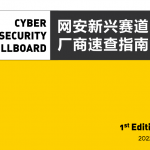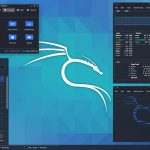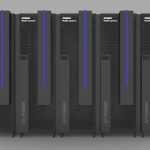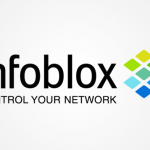Cybersecurity Mesh
Technology
Trends for 2022: Cybersecurity Mesh
By Felix Gaehtgens, James Hoover, Henrique Teixeira, Claudio Neiva, Michael Kel ey, Mary Ruddy,
Patrick Hevesi
Top Strategic Technology Trends for 2022: Cybersecurity Mesh
Published 18 October 2021 – ID G00756665 – 13 min read By Analyst(s): Felix Gaehtgens, James Hoover, Henrique Teixeira, Claudio Neiva, Michael Kelley, Mary Ruddy, Patrick Hevesi
Initiatives: Identity and Access Management and Fraud Detection The rapid evolution and sophistication of cyberattacks and the migration of assets to the hybrid multicloud creates a perfect storm. IT leaders must integrate security tools into a cooperative ecosystem using a composable and scalable cybersecurity mesh architecture approach.
Additional Perspectives
■
Summary Translation + Localization: Top Strategic Technology Trends for 2022: Cybersecurity Mesh
(14 December 2021)
Overview
Opportunities
■
Cybersecurity mesh architecture (CSMA) provides a foundational support layer that enables distinct security services to work together to create a dynamic security environment.
■
CSMA provides a more consistent security posture to support increased agility for the composable enterprise. As organizations invest in new technology to enable digitalization, CSMA provides a flexible and scalable security foundation that provides bolt-on security for assets in hybrid and multicloud environments.
■
CSMA creates a better defensive posture through a col aborative approach between integrated security tools and detective and predictive analytics. The outcome is enhanced responsiveness to breaches and attacks.
■
Cybersecurity technology delivered through this model takes less time to deploy and maintain, while minimizing the potential for security dead ends that cannot support future needs. This frees cybersecurity teams for more value-added activities.
Gartner, Inc. | G00756665
Page 1 of 11
Recommendations
IT leaders with a focus on security and identity and access management:
■
Combat the increase in security complexity by evolving your security infrastructure to be more integrated, focusing on centralized administration and decentralized policy enforcement.
■
Position the enterprise for a secure future by choosing cybersecurity technologies that ease integration via plug-in APIs that al ow extensions and customization, standards support, and extensible analytics.
■
Close interoperability gaps between different vendors’ solutions by using current and emerging security standards.
■
Deploy supportive layers for a long-term CSMA strategy by choosing a primary-vendor-led approach and fil ing capability gaps, or by using a best-of-breed approach from the start. Make the most of CSMA’s supportive layers: security analytics, identity fabric, policy management and integrated dashboards.
Strategic Planning Assumption
By 2024, organizations adopting a cybersecurity mesh architecture to integrate security tools to work as a col aborative ecosystem will reduce the financial impact of individual security incidents by an average of 90%.
What You Need to Know
This research is part of Gartner’s Top Strategic Technology Trends for 2022.
Download the Executive Guide to Cybersecurity Mesh
The cybersecurity mesh trend integrates security controls into, and extends them to span, even widely distributed assets. It addresses three realities affecting enterprise security:
■
Attackers don’t think in silos, but organizations often deploy siloed security controls.
■
The perimeter has become more fragmented.
■
Many organizations are adopting a multicloud strategy and need a consolidated security approach.
Gartner, Inc. | G00756665
Page 2 of 11
Cybersecurity mesh provides several foundational layers to act as a force multiplier when integrating different security products (see Figure 1).
Figure 1: Cybersecurity Mesh Architecture
Attackers don’t think in silos. Ransomware and other cybersecurity attacks feature in the news daily and provide a lucrative revenue stream, or the potential for sabotage, for malicious actors. Cybercrime (especial y ransomware) has led to disruptions in the physical world, particularly when it has targeted critical infrastructure. This is what happened with the Colonial Pipeline, an oil pipeline in the U.S., in May 2021. 1
A proper defensive posture requires eliminating silos and inefficiencies, both from an organizational perspective as wel as within technology. This is because hackers don’t think in silos. However, many organizations do, and many security tools work within their own view of the world with minimal interoperability — or even awareness — of other tools.
Hackers often engage in lateral movement that uses a weakness in one area to exploit an adjacent area.
But hope is on the horizon. Some security analytics and intel igence tools already use domain-specific information across distinct security technology domains to create connections between security controls. Additional y, security standards have risen to the chal enge and support the “everything, anywhere” mechanism. 2 However, some features from these standards are not yet commonly in use.
Gartner, Inc. | G00756665
Page 3 of 11
The perimeter has become more fragmented. Many applications and data are no longer in the company-owned data center, and users are accessing cloud-based applications from anywhere. In a traditional data center, network perimeter security was a common mechanism for control ing access. Within a distributed environment that supports assets everywhere and access from anywhere, identity and context have become the ultimate control surface.
Many organizations are adopting a multicloud strategy. According to several studies, 3
organizations tend to consume services from more than one cloud provider. With every cloud provider supporting a different set of policies, creating a consistent security posture across cloud providers is chal enging. The huge on-premises estate of services found in most organizations only compounds the chal enges. However, emerging standards and products are closing this gap. 4
Profile: Cybersecurity Mesh
Description
Cybersecurity mesh architecture is a composable and scalable approach to extending security controls, even to widely distributed assets. Its flexibility is especial y suitable for increasingly modular approaches consistent with hybrid multicloud architectures. CSMA enables a more composable, flexible and resilient security ecosystem. Rather than every security tool running in a silo, a cybersecurity mesh enables tools to interoperate through several supportive layers, such as consolidated policy management, security intel igence and identity fabric.
CSMA presents a col aborative approach for distributed security services to provide a force multiplier to gain a more cohesive security posture with fewer resources.
CSMA provides the foundation for people and machines to connect securely from multiple locations across hybrid and multicloud environments, channels, and diverse generations of applications, protecting al the organization’s digital assets. By doing so, it fosters a more consistent security posture to support increased agility for the composable enterprise. 5 CSMA al ows security tools to integrate by providing a set of enabling services, such as a distributed identity fabric, security analytics, intel igence, automation and triggers, as wel as centralized policy management and orchestration.
Gartner, Inc. | G00756665
Page 4 of 11
CSMA purposeful y fosters composability, scalability and interoperability for security controls. It provides four foundational layers to enable distinct security controls to work together in a col aborative manner and facilitate their configuration and management.
The four layers are:
■
Security analytics and intel igence: Combines data and lessons from other security tools, and provides analyses of threats and triggers appropriate responses
■
Distributed identity fabric: Provides capabilities such as directory services, adaptive access, decentralized identity management, identity proofing and entitlement management
■
Consolidated policy and posture management: Can translate a central policy into the native configuration constructs of individual security tools or, as a more advanced alternative, provide dynamic runtime authorization services
■
Consolidated dashboards: Offers a composite view into the security ecosystem, enabling security teams to respond more quickly and more effectively to security events
Why Trending
Existing approaches to identity and security architectures are not sufficient to meet today’s rapidly changing demands. CSMA helps provide a common, integrated security structure and posture to secure al assets, whether they’re on-premises, in data centers or in the cloud. CSMA enables stand-alone solutions to work together in complementary ways to improve overal security posture by standardizing the way the tools interconnect.
For example, it centralizes policy management and helps move control points closer to the assets they are designed to protect.
Users, devices, applications and data have left the traditional office and data center. This means that a single network perimeter no longer exists to judge that “inside is good and outside is bad.” Identity and context have become the ultimate control plane in a distributed environment that supports assets and access from everywhere. CSMA’s distributed identity fabric provides trusted access by our workforce, clients, business partners and things.
Implications
Gartner, Inc. | G00756665
Page 5 of 11
Today’s distributed and rapidly growing digital landscape makes complex demands requiring a new approach to security architecture. Existing architectural approaches are overly fragmented. This increases security risk and operational overhead, especial y in an environment in which making good risk decisions requires orchestrating a growing number of risk signals. Adopting CSMA wil lead to improved usability for both administrators and end users.
For example, today’s security and identity deployments consist of multiple tools that often are not ful y integrated (for example, they might be only loosely coupled by supporting federated authentication). In other cases, multiple tools may duplicate supporting functions. 6 Operating these tools requires many separate dashboards, multiple policy administration points and maintaining many ad hoc integrations. This problem is exacerbated when new security or identity needs surface and new categories of tools are invented. There are too many separate tools with too many separate dashboards.
The CSMA approach provides IT leaders with a model that enables them to:
■
Reduce deployment times and security failures.
■
Increase agility and resilience.
■
Focus on higher-value endeavors.
Security Product Consolidation
Many IT leaders want to consolidate their security spending and reduce complexity.
According to a 2020 Ponemon Institute report, organizations deploy more than 45 security solutions and technologies on average. 7 IT leaders want fewer vendors, with each vendor providing more and better integrated capabilities. 8 Ideal y, the offerings of large security vendors would have comprehensive and wel -integrated capabilities. Realistical y, however, security vendors offer some integrated capabilities at different stages of maturity and completeness. IT leaders must fil existing and emerging gaps with other security point products.
Several large ecosystem vendors (such as IBM, McAfee, Microsoft and Symantec) offer security stacks that include multiple integrated security controls that can secure traditional on-premises assets as wel as cloud assets. In general, the positive outcomes from choosing a primary-vendor (not necessarily a single-vendor) approach are:
■
Better integrated and centralized management interfaces and dashboards Gartner, Inc. | G00756665
Page 6 of 11
■
Consolidated (and often less expensive) licensing
However, no single vendor wil have components (security controls) that are al best in class — some components wil be better than others. Every vendor wil have gaps in its offering that need to be fil ed with solutions from other vendors, or even open-source solutions. Few organizations can consolidate to a single security vendor, or even a smal er set of security vendors. 9 Integrating multiple security tools remains a necessity.
Integration can be achieved through a mix of open standards and interfaces, proprietary APIs, and point integrations (e.g., ad hoc integrations between vendors’ tools). The offerings of some vendors can be a good starting point for building one or more supporting layers for a CSMA, and integrating further security controls in a composable manner. When gaps exist in open-standards support, or when security standards are emerging or evolving, open-source tools can be an easy way to get a head start with the latest features.
Cross-Domain Security Analytics Wil Make a Real Difference Most security analytics tools deployed are domain-specific, and organizations typical y use multiple security analytics tools alongside each other, in a nonintegrated manner.
Several vendors now offer security tools that provide multiple analytics use cases from a single tool by using domain-specific information across different security domains, and even data from siloed analytics functions of security tools. For example, a security product may have its own native analytics engine that calculates a risk score for a particular session, user or transaction. A broader security analytics and intel igence tool could then use this risk score, applying it in a different context from that original y intended. Extended detection and response tools are one example of this trend. 10
Users of these advanced technologies have tended to be organizations with a highly mature security operation, but this trend is becoming more mainstream. Gartner expects this wil trickle down into smal er and less mature security organizations.
Multicloud
Distributed IT assets in the multicloud add to the fragmentation problem when securing assets. For example, Alibaba Cloud, Amazon Web Services (AWS), Google and Microsoft Azure use different methodologies to secure assets within their individual ecosystems.
However, organizations seek to adopt a coherent security posture across the multicloud. In recent years, new technology has arisen to help with this chal enge. 4
Actions
Gartner, Inc. | G00756665
Page 7 of 11
■
Prioritize composability and interoperability when selecting security solutions, and invest in building a common framework to integrate them for synergetic effects.
■
Choose new tools that enable you to use standard core functions and that are designed to operate as part of a larger cybersecurity mesh, rather than another independent silo. Prioritize vendors that have opened up their policy framework, enabling policy decisions to be made outside the tool.
■
Select vendors with a commitment to and track record of embracing new and emerging security and identity standards because standards compliance is becoming more important.
■
Realign your organization’s security and identity vision with CSMA.
■
Reprioritize your organization’s planning roadmap to use CSMA principles and connect existing projects that are now related. For example, move to a zero-trust architecture and improve multifactor authentication user experience with adaptive access.
■
Transition from traditional VPNs to reliable, flexible and secure cloud-delivered, zero-trust network access integrated with an access management tool.
About Gartner’s Top Strategic Technology Trends for 2022
This trend is one of our Top Strategic Technology Trends for 2022. The trends and technologies don’t exist in isolation; they reinforce one another to accelerate growth, sculpt change and engineer trust (see Figure 2). You should explore each of these trends for their applicability to your organization.
Gartner, Inc. | G00756665
Page 8 of 11
Figure 2: Top Strategic Technology Trends for 2022: Cybersecurity Mesh Evidence
第一时间获取面向IT决策者的独家深度资讯,敬请关注IT经理网微信号:ctociocom

除非注明,本站文章均为原创或编译,未经许可严禁转载。
相关文章:














